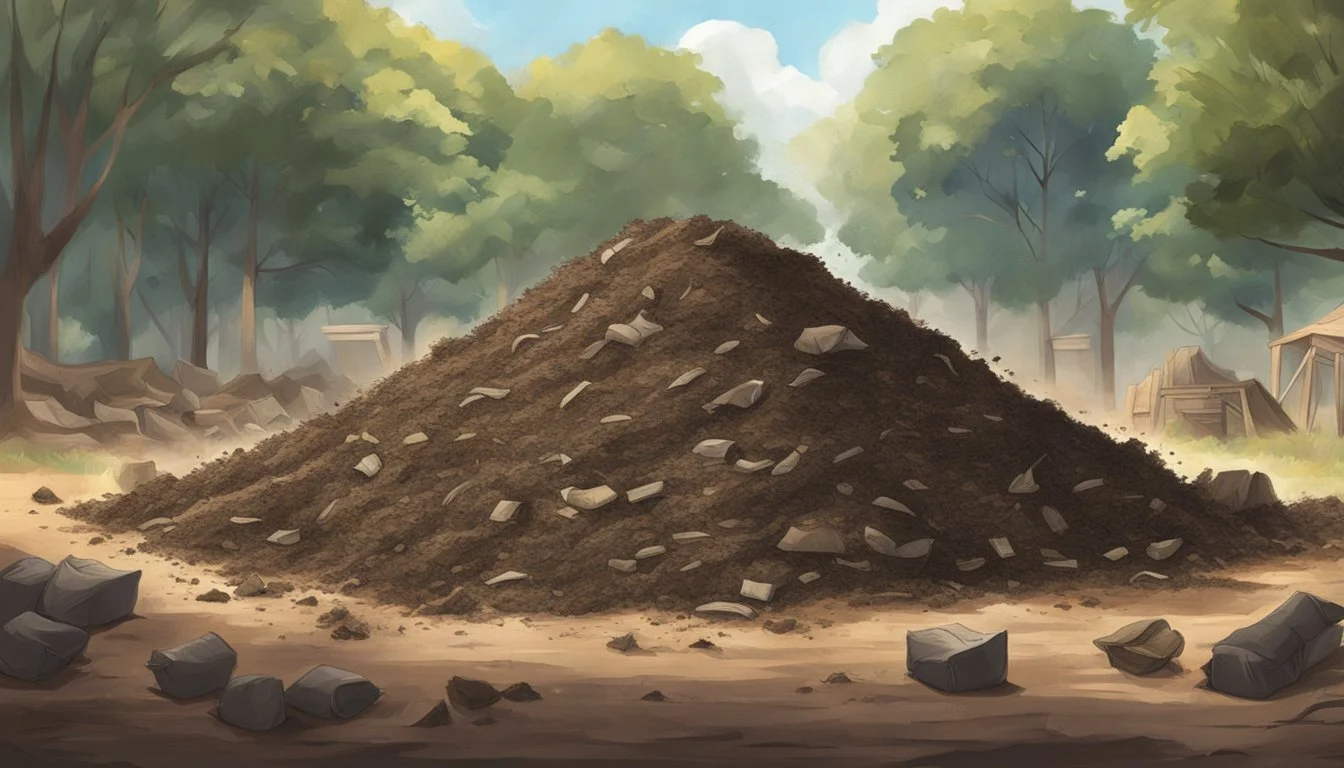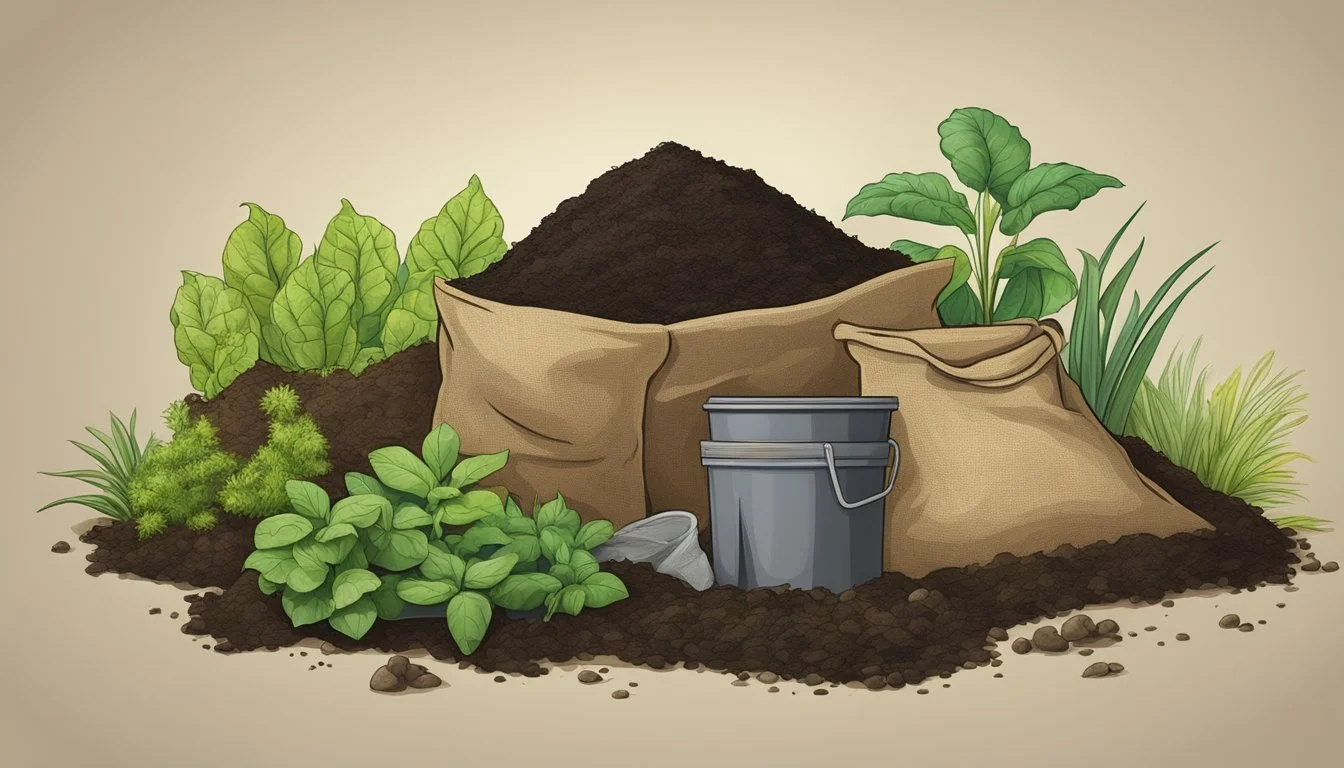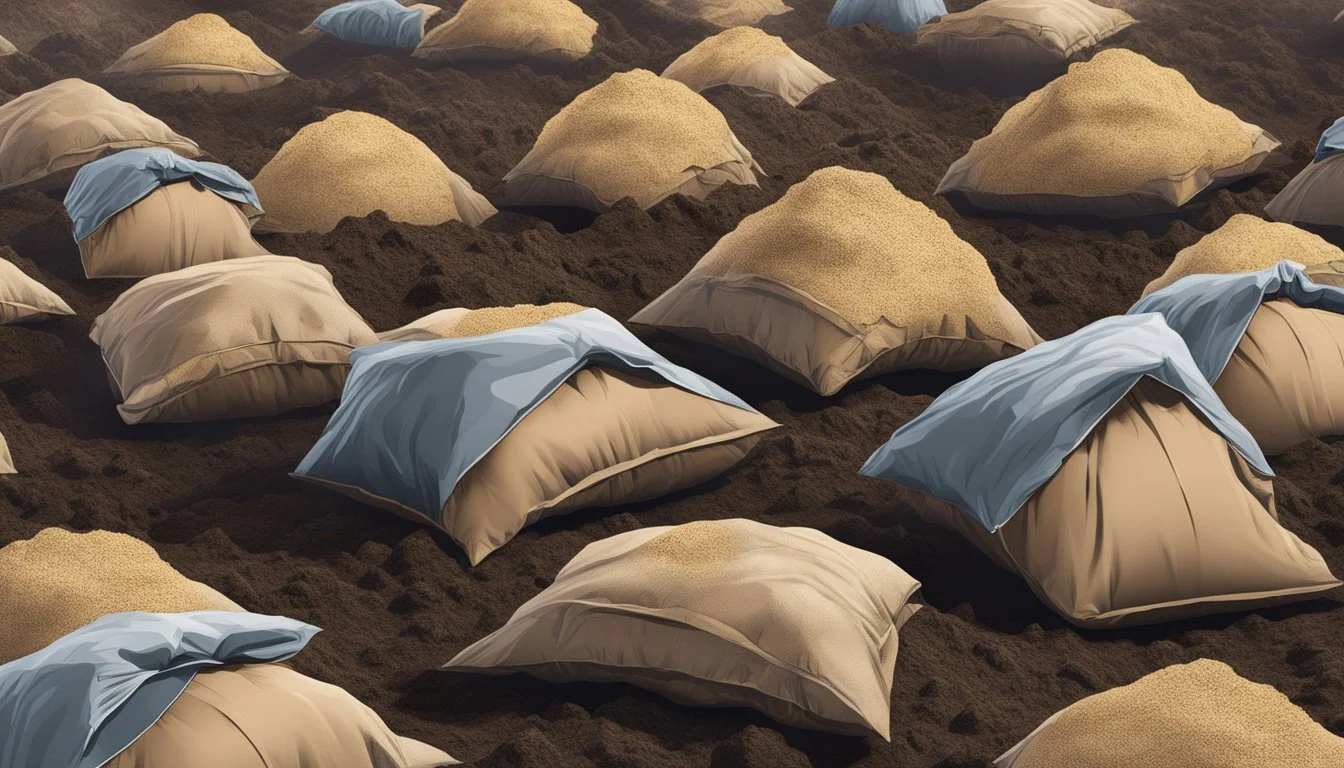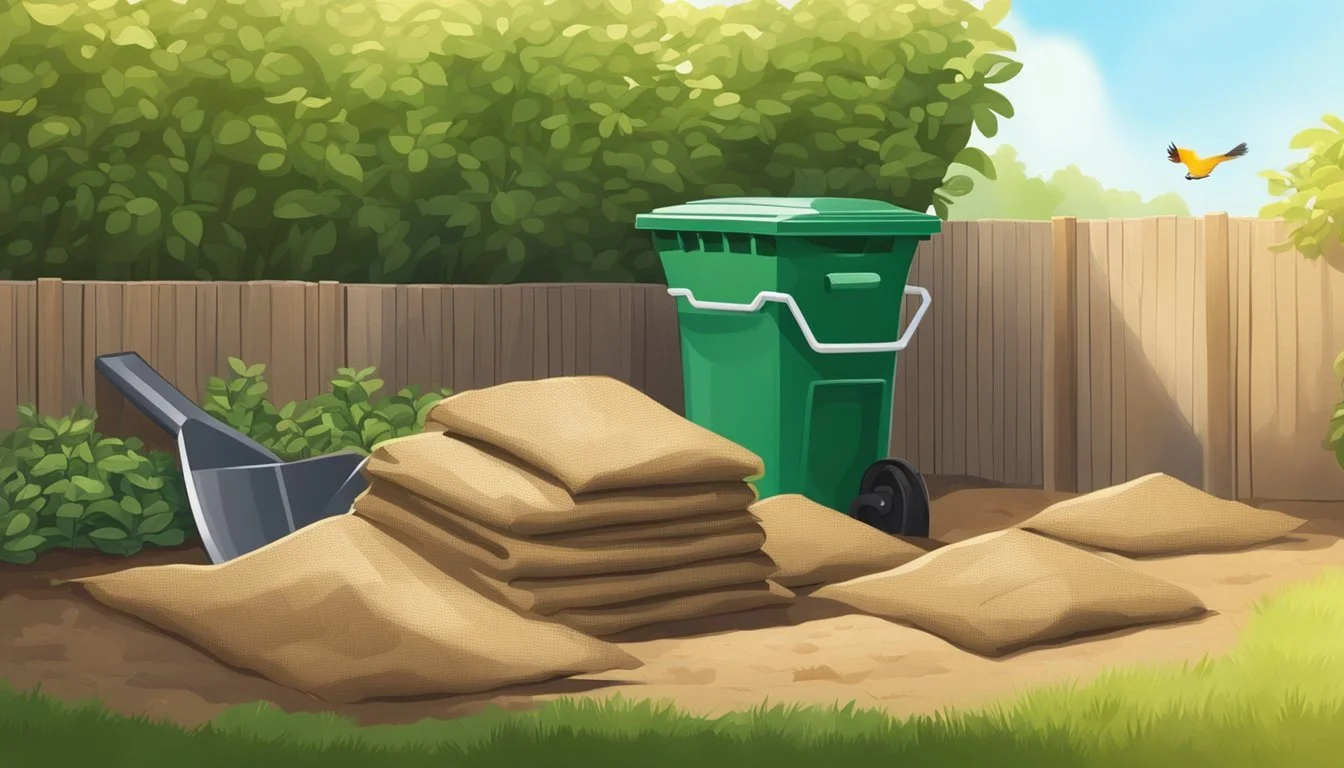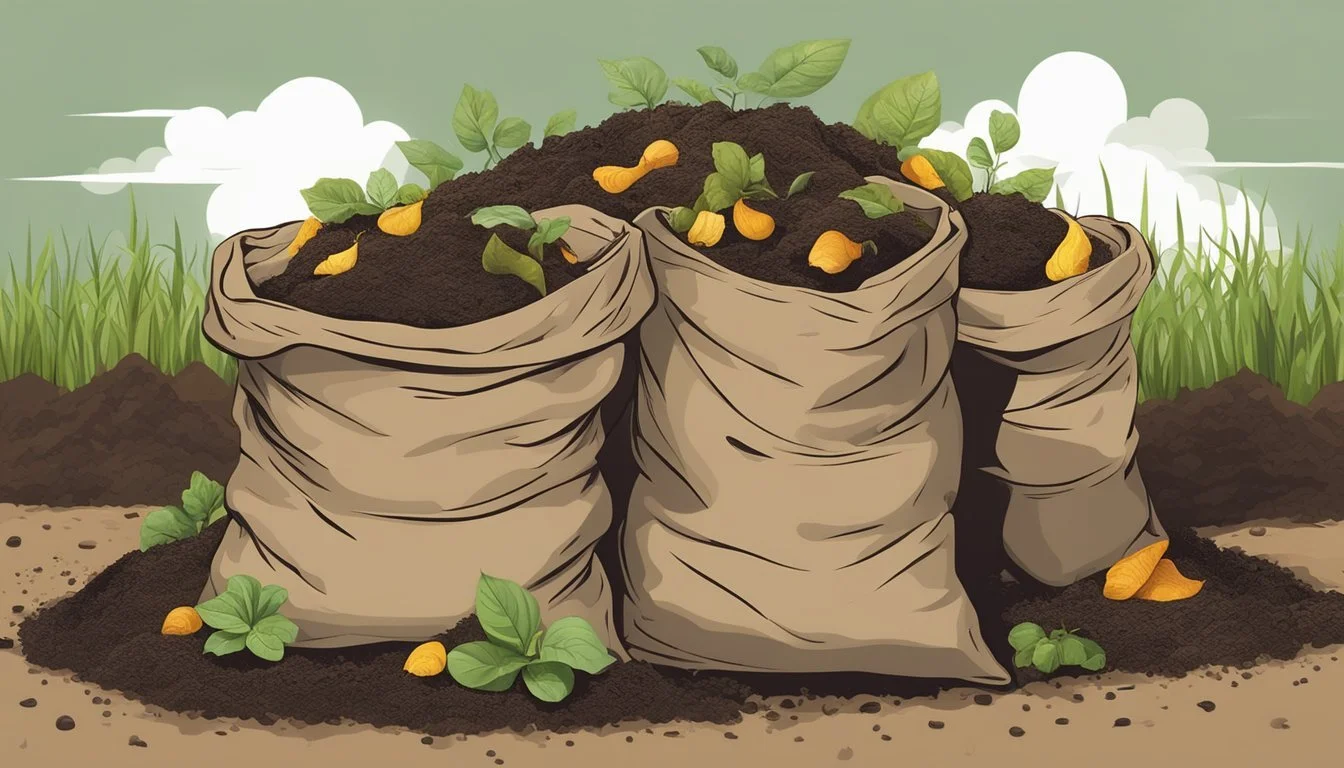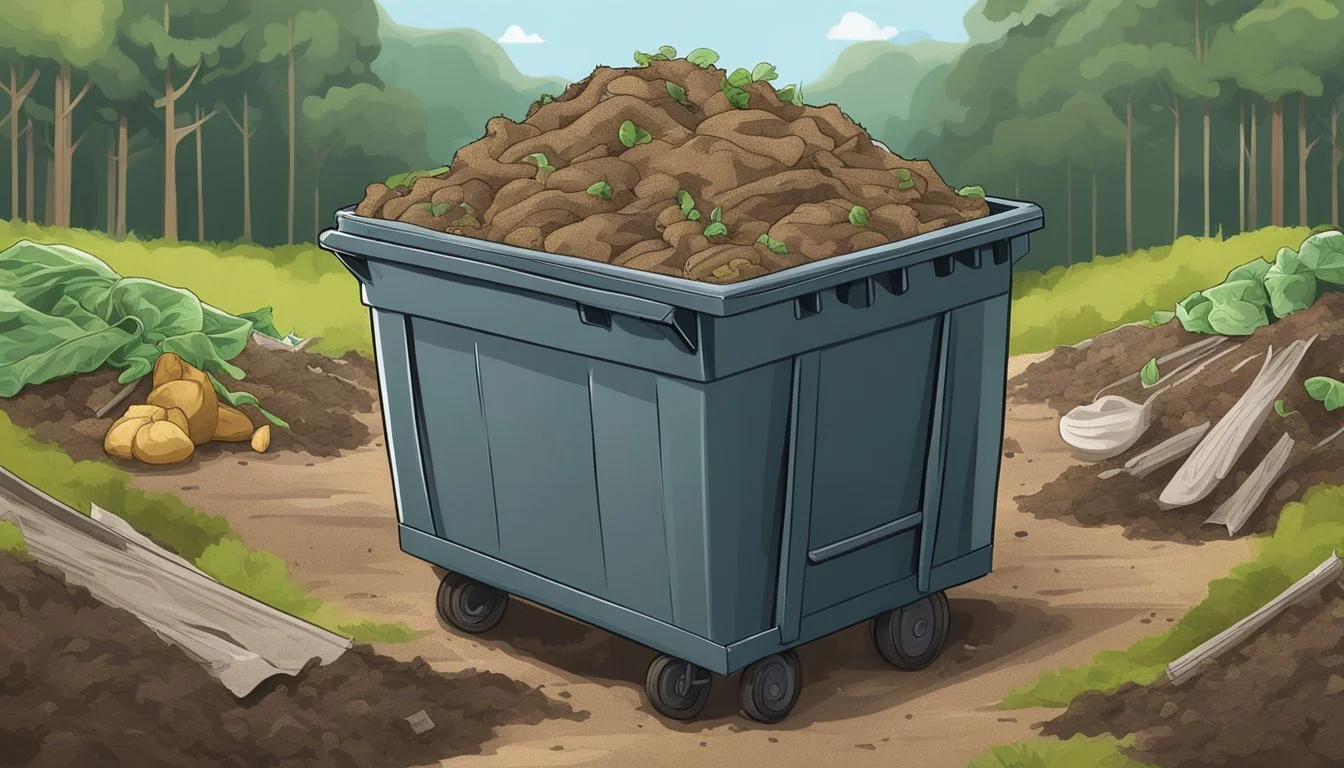Can You Compost Burlap Sacks?
Understanding Their Biodegradability
Burlap sacks, commonly made from natural jute fibers, have become an increasingly popular choice in gardening and agricultural practices. As sustainability becomes a more pressing concern, gardeners frequently question whether these sacks are compostable and if they can contribute positively to the environment post-use. The good idea behind composting burlap is rooted in its natural origin, which, in theory, allows it to break down over time and enrich compost with valuable organic matter.
In practical terms, composting burlap sacks is indeed feasible. As they are manufactured from plant-based fibers, these sacks decompose over time when subjected to the conditions present in a compost pile or bin. By adding burlap sacks to compost, gardeners can enhance the nutrient content of their compost, benefiting their garden soils and promoting healthier plant growth. However, it is essential to discern between natural burlap and synthetic or chemically treated varieties, as the latter may not break down as easily and could introduce unwanted substances into the compost mix.
Considering the environmental advantages, incorporating burlap sacks into one's composting routine aligns well with eco-friendly gardening practices. It diverts waste from landfills, where organic materials can contribute to methane production, and instead, transforms the material into a valuable resource for garden enrichment. Thus, composting burlap sacks benefits both the garden and the broader ecosystem.
Understanding Composting Basics
In this section, we explore the science behind composting and its environmental significance.
The Composting Process
Composting is a natural process in which microorganisms break down organic matter into simpler substances. The primary components of a compost pile include greens (nitrogen-rich materials), browns (carbon-rich materials), moisture, and air. These elements combine to support the decomposition activity of bacteria, fungi, and other organisms. The right balance of these components creates an efficient environment for microorganisms to convert waste into compost, a nutrient-rich soil amendment.
Greens: Fruit scraps, vegetable peels, grass clippings
Browns: Leaves, straw, paper, burlap sacks
Moisture: Water helps in the decomposition process
Air: Turning the pile adds oxygen that's vital for aerobic decomposition
Benefits of Composting
Composting has multiple environmental benefits:
Waste Reduction: It significantly cuts down the volume of waste going to landfills.
Soil Enrichment: Compost enriches soil, helping retain moisture and suppress plant diseases.
Climate Change Mitigation: By diverting waste from landfills, composting reduces the production of methane—a potent greenhouse gas.
Materials labelled compostable or biodegradable material like burlap sacks, which are made from natural jute fibers, can be safely added to compost bins. They decompose over time and contribute to the creation of a healthy compost.
Burlap in Composting
In the context of composting, the natural fibers present in burlap bags, specifically those made from jute or hemp, allow these sacks to break down over time, enriching the compost with a balanced carbon contribution.
Burlap Composition
Burlap, commonly referred to as hessian, is comprised of fibers derived from the jute plant or, occasionally, from hemp. These natural fibers are inherently biodegradable, which qualifies burlap as a suitable candidate for composting. Unlike synthetic materials, burlap sacks do not introduce harmful chemicals into the compost as they decompose.
Material Source: Jute Plant or Hemp
Fiber Type: Natural, Biodegradable
Burlap Decomposition Rate
The rate at which burlap decomposes in a compost pile can vary, typically ranging from 1 to 2 years. Factors influencing this timeline include the environmental conditions of the compost system—with optimal moisture, aeration, and microbial activity, the decomposition process can be faster. Burlap sacks serve not only as components of the compost pile but can also provide structure and aid with aeration, which is beneficial for microbial life.
Range: 1—2 years
Conditions Impacting Decomposition: Moisture levels, aeration, microbial activity
Preparing Burlap for Composting
The composting process benefits from the inclusion of burlap sacks, as they are biodegradable and composed of natural jute fibers. Proper preparation of burlap sacks can expedite their decomposition in a compost pile.
Shredding Burlap Sacks
To prepare burlap sacks for composting, one should first shred the material to increase its surface area, which aids in accelerating the breakdown process. Shredding can be done using a pair of sturdy scissors, a knife, or by hand if the fabric is loose enough. Smaller pieces are more manageable for microorganisms within the compost bin. One can follow these steps:
Lay the burlap sack flat on a hard surface.
Cut into strips using the knife or scissors.
Further shred each strip into smaller pieces, approximately 1-2 inches in size.
Precautions When Composting Burlap
While burlap is natural and generally safe for composting, it is crucial to ensure that the sacks are not treated with chemicals or synthetic fibers. Some burlap sacks may contain synthetic threads or be treated for rot resistance, which could harm the composting ecosystem. Moreover, burlap sacks that have been used to carry food items might retain residues that attract pests. Here are the main precautions:
Verify the purity of the burlap sack: Ensure it is 100% natural jute with no synthetic additives.
Avoid composting chemically treated burlap: Treated burlap could contain substances harmful to the composting process.
Remove any non-biodegradable parts: This includes any ropes or metal components that might be part of the sack structure.
Optimizing the Compost Pile
To ensure a thriving compost pile, a careful balance of materials and maintenance of the right conditions are paramount. One must pay attention to the ratio of carbon-rich to nitrogen-rich substances as well as ensuring the pile remains aerated and at a suitable temperature and moisture level.
Balancing Brown and Green Materials
In composting, brown materials are carbon-rich and include items like burlap sacks, dried leaves, and straw, whereas green materials provide nitrogen and include kitchen scraps and lawn clippings. An effective compost pile should maintain a carbon to nitrogen ratio (C ratio) of about 30:1. This means for every 30 parts of brown material, there should be one part of green material.
Brown Materials: Burlap sacks (cut into small pieces), dried leaves, twigs
Green Materials: Vegetable scraps, fruit peels, coffee grounds
Maintaining Proper Conditions
A compost bin must have the right conditions to decompose materials efficiently. Adequate moisture is critical – the compost should feel like a wrung-out sponge. Heat is generated naturally as microorganisms break down organic matter; temperatures between 135-160°F (57-71°C) are ideal to hasten decomposition and kill potential pathogens. Air pockets are essential for oxygen, which these microorganisms need to thrive; turning the pile creates these gaps. A compost thermometer can be used to monitor temperature and gauge the pile's activity. Regularly turning the pile and checking for even moisture distribution promotes a healthy composting process.
Troubleshooting Common Composting Issues
Effective composting requires managing pests, controlling odors, and preventing mold and disease. These challenges, if left unchecked, can hinder the efficiency of the composting process and negatively impact the quality of the resulting compost.
Pest Management
To keep pests like rodents and insects from invading compost piles, especially when composting materials like burlap sacks, proper management strategies are crucial. These involve:
Securing the compost: Use bins with tight-fitting lids or cover piles with wire mesh.
Balancing materials: Maintain a good mix of brown (carbon-rich) and green (nitrogen-rich) matter to avoid attracting pests.
Odor Control
Odors in compost bins often indicate an imbalance in the composting materials. They can be mitigated by:
Aeration: Turn the compost pile regularly to provide oxygen, which helps microbes break down organic matter more efficiently.
Material balance: Adjust the ratio of greens and browns to prevent overly wet, smelly conditions.
Mold and Disease Prevention
The presence of mold and disease in compost piles can be detrimental to the health of plants when applied as fertilizer. To prevent their occurrence:
Monitor moisture levels: Ensure the pile is moist, but not wet, to discourage mold growth.
Avoid diseased plant material: Do not include material from diseased plants to keep pathogens out of the pile.
Creative Uses for Compost and Burlap
Burlap sacks and compost both play significant roles in sustainable gardening. They can be integrated to improve soil health and bolster eco-friendly practices.
Nutrient-Rich Mulch Application
Compost serves as an excellent organic fertilizer, rich in nutrients that support plant growth. Gardeners can lay burlap sacks over compost to act as a mulch layer. This technique helps retain moisture in the soil and provides a slow release of nutrients. A blend of compost with grass clippings, manure, bark, or sawdust can create a nutrient-rich mulch that nourishes plants and builds a healthier garden bed.
Eco-Friendly Gardening Practices
Using burlap sacks in gardening is an eco-friendly practice, as burlap is biodegradable. When used as a protective layer over a garden bed, the sacks can suppress weeds and minimize soil erosion. Over time, the burlap will decompose, adding organic material to the soil. This process complements the use of compost to create a thriving, sustainable garden environment.
Environmental Impact of Composting Burlap
Composting burlap sacks contributes significantly to environmental sustainability by reducing landfill waste and promoting the use of eco-friendly materials. These sacks, when broken down in backyard composts, transform into organic fertilizer, closing the loop on a sustainable practice.
Reducing Waste in Landfills
Composting burlap sacks helps to reduce the volume of waste in landfills. Burlap, being a natural fiber, decomposes into nutrient-rich organic material when placed in a composting environment. The diversion of burlap from landfills:
Decreases methane emissions: Organic matter in landfills decomposes anaerobically, producing methane, a greenhouse gas.
Conserves space: Landfills are less burdened, extending their operational lifespan.
Supporting Sustainable Practices
Burlap sacks' compostability supports sustainable practices both in agriculture and at home. By returning to the earth as organic fertilizer, these sacks aid in:
Enhancing soil health: The decomposed burlap adds structure and nutrients to the soil.
Promoting eco-friendly materials: Encourages the use of sustainable materials over synthetics.
Preparing Your Garden for Compost
When integrating compost into a garden, it's critical to prepare both the planting area and compost pile appropriately to enhance soil fertility and plant health.
Incorporating Compost into Soil
To enrich the garden's soil with compost, one should first turn the top layer of soil using a shovel or tiller to loosen it. Adding a 3-to-4 inch layer of mature compost evenly across the planting area is the next step before thoroughly mixing it into the top 6 to 8 inches of soil. This process facilitates the introduction of vital microorganisms and nutrients, key for robust plant growth.
Loosen soil: Use a shovel or tiller.
Add compost: Spread a 3-to-4 inch layer over soil.
Mix into soil: Combine with the top 6 to 8 inches of garden soil.
Seasonal Considerations for Compost Use
The optimal time to apply compost in the garden depends on various seasonal factors. In fall, after harvesting, spreading compost gives it time to integrate with the soil, with the aid of winter's rain and snow, before spring planting. Conversely, incorporating compost in the spring rejuvenates the soil by replenishing nutrients that were depleted over the growing season.
Fall application: Enhances soil structure for spring.
Spring addition: Replenishes nutrients for new plantings.
For those maintaining a compost pile in the backyard, regular turning to aerate and mixing green and brown materials ensures high-quality compost suitable for the garden.
Advanced Composting Techniques
In the realm of composting, certain techniques can enhance decomposition rates and improve compost quality. Advanced composting methods involve careful management of aeration and the integration of compost into permaculture designs.
Aerating the Compost Pile
One key to accelerating the composting process is ensuring proper aeration. A compost pile requires oxygen to thrive, as aerobic bacteria are the primary agents of decomposition. Aeration can be improved using manual turning or through the introduction of passive air flow systems.
Manual Turning: Gardeners should turn their compost heap regularly, aiming for at least once a week to maintain oxygen levels.
Passive Air Flow: The placement of the heap can affect air flow. Locating the pile in an area where it is not overly compacted and has exposure to natural breezes can assist in passive aeration. Additionally, one can use PVC pipes with drilled holes to create an air circulation system within the pile.
Using Compost in Permaculture
Permaculture systems benefit significantly from the use of compost as they aim to create sustainable and self-sufficient gardens. Compost introduces vital nutrients and microorganisms to the soil, which are essential for permaculture practices.
Soil Amendment: Compost can be applied to permaculture beds to increase soil fertility and improve soil structure, promoting healthy plant growth.
Mulching: Using compost as a mulch layer in permaculture designs helps retain soil moisture and suppresses weeds, while gradually incorporating nutrients into the soil as it breaks down.
By implementing these advanced composting techniques, a gardener can enhance the efficacy of their composting efforts and contribute positively to their permaculture practices.
Conclusion
Burlap sacks, typically made from natural jute fibers, present an eco-friendly option for composting. They are not only biodegradable but also contribute to the overall health of the compost due to their breathability and ability to add carbon-rich material to the compost mix.
When incorporating burlap sacks into a compost bin, it is crucial to shred or cut them into smaller pieces to speed up the decomposition process. As the burlap breaks down, it enriches the compost with organic matter, aiding in soil structure improvement when the compost is ultimately applied.
Advantages of using burlap sacks in composting:
Enhance microbial activity: Aeration through the porous material encourages microbes.
Moisture retention: They help maintain adequate moisture levels within the compost pile.
It is important to note that the source of the burlap should be considered. Organic burlap is preferable as it ensures there are no synthetic fibers or chemical treatments that could harm the composting process or the resulting compost.
In summary, burlap sacks are an excellent addition to compost bins. Their natural composition and the benefits they bring make them a smart choice for garden enthusiasts and environmental advocates alike. Gardeners should feel confident utilizing these sacks to support the generation of nutrient-rich compost, ultimately benefiting the environment and soil health.



